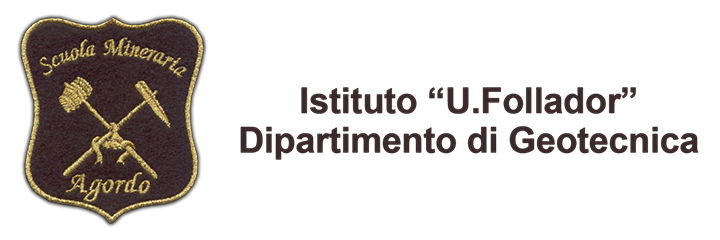Water Trail: the Water Path focuses on water in its various details: streams, sources, waterfalls, lakes and glacial morphology.
The path unfolds mostly along the bottom of the valley and can be divided into the following stages: 2 Le Peschiere (The Fisheries), 3 San Lucano, 4 Mezzavalle, 8 Col di Prà, 9 Sources of Tegnàs, 10 Cascata dell'Inferno (Hell's Waterfall), 12 Pont.
Departure: Taibon Agordino (Panel 1)
Length: 10 km
Difference in altitude: about 600 meters
Travel time (on foot) a whole day
Itinerary description
Continue for 400 meters from Taibon Agordino's Town Hall towards Pèden; from here turn left and continue to Villanova. Leaving Villanova behind, the path crosses the hamlet of Forno di Val; the placename refers to the forges and furnaces for metal processing with which the area abounded up until the nineteenth century.
Continue along the road winding along the stream Tegnàs, at the base of the Piaie de Prombiànch; after reaching the junction for the Peschiere pond located 800 meters from the junction itself (panel 2), one can park the car there and set off towards the pond which can be reached after a walk of about 200 meters.
Once we've left the pond behind, we arrive on the main road crossing the edge of the alluvial fan in Boral della Besausega. The fan is completely submerged in boulders and debris.
There is an intake system for the collection of the spring waters known as "i Fontanoi" a little further down the road. This is a secondary water resurgence, where the water coming from the Pale di San Lucano, re-emerges on the surface, after having passed through the debris layer that surrounds the walls. This happens as a result of the lesser permeability of the sandy-loamy alluvial deposits of the valley floor, compared to the groundwater and landslide debris. Other sources of the same type are present under the Piaie di Prombianch (source Prombianch) and just beyond the church of San Lucano (Scalette).
After 900 metres from the Peschiere junction we reach the "picnic" area, where it is possible to fully comprehend Dino Buzzati's description of Pale di San Lucano:
… (just beyond and in front of the humble but no less dazzling stream, soar the walls of Pale di San Lucano).
(Dino Buzzati, "A Three-man Roped Team" in "Corriere della Sera" June, 23, 1956).
The overhanging vertical walls of Seconda Pala which are more than 1300 meters high, loom over the road a short distance away; the enormous fracture of Boral di San Lucano emerges a bit further on. Beginning on the slope of an abandoned quarry, there is a trace of the trail climbing towards the base of Seconda Pala. Strata from the Agordo Formation emerge along the ravine above, where an intriguing flora fossil of the Anisian period (247-242 million years ago) was found.
The church of San Lucano located 200 metres from the picnic area can be reached after a further 250-metre walk where the visitor will find Panel 3.
From the church our journey continues along the road between the stream Tegnàs and the large boulders coming from the landslide scattered at the foot of the Pala-Group. At the second picnic area located 700 m from the church we can have a short break and enjoy the view to the boral known as Livinàl dell'Acqua. The ravine is called Livinàl because of the gigantic avalanches tumbling down during snowy winters from the hanging glacial cirque “la Scudela”, or "bowl" in English, which hosts a small perennial snowfield. The prominent karst spring of Scafa-San Lucano is clearly visible on the left side, at the foot of the ravine. We reach Mezzavalle after another half a kilometre. (Panel 4).
From Mezzavalle we continue along the road with the "menacing" vertical wall of the Terza Pala di San Lucano, 1400 metres in height. The danger is highlighted by the gigantic boulders scattered along the slope. The ancient lime kiln comes into sight after 700 meters. The kiln is locally known as "calchera" and was recently cleaned by local volunteers recently cleaned by local volunteers (Panel 5). We can return to the road at the bottom by the same trail and continue to Col di Prà. We reach the hamlet of Prà after about three hundred meters (Panel 7). Travellers who have arrived by car, will find a large car park here and continue the path on foot. Panel 8 is located in the large parking lot.
Allow for roughly 2 hours to complete a roundtrip to the Springs of Angheraz (Panel 9).
We can leave the car in the large parking lot in Col di Prà at the crossroads of Locanda al Cacciatore and take the tiny road to the left leading to Val d'Angheràz; after about 400 metres we can cross the river Rio Bordina just above its confluence with the stream Tegnàs, in an area destroyed by the flood. A little further on there is a large selective barrier constructed in order to reduce the solid transport of the stream Angeràz and was put to the test by the flood.
The road that led to Val d'Angheràz was completely destroyed for a long stretch and the chosen route runs along the gravel margins close to the slope. After a short stretch of preserved road we reach the water intake structure collecting water from spring Polver - a water flow springing at the base of a detrital escarpment locally covered with fine-grained glacial deposits (hence the name Polver - Italian for dust).
From the Polver spring onwards, the road is once again ruined; traces of the path rise through the gravel between boulders and the enormous debris released during the flood descending from Val della Civetta.
We resume our climb up through the debris and as soon as we cross the furrow of Val Civetta, we bump again at the dilapidated road and proceed through the valley until the junction for Casera d'Angheràz Bassa (1046). The road to the hut branches off to the left and descends through the beech and fir forest until it reaches a hairpin bend which crests abruptly to the right towards the hut. Recently rebuilt, the hut itself, nestles against a huge quaint boulder. Right at the hairpin bend there is a track of the old forest road plunging into the woods; the track turns almost immediately into a path that leads to the area with the water springs.
Just downstream of the lower Casera d'Angheràz, the waters infiltrated into the alluvial mattress further upstream re-emerge on the surface. The springs are distributed in two areas, the largest is just below the lower Casera Angeràz (Panel 9). The other group of water springs is located on the other side ofTegnàs and the trail leading thereto isn't always easy to spot. The area is quite fragile and one has to literally tiptoe once there.
After visiting the springs, return along the same path to Col di Prà from where you continue along the road in the direction of Pont; after the (temporary) bridge that replaced the one torn up by the stream Bordina during the storm Vaia, continue climbing along the military road.
Leave the military road and take the steep path leading to Cascata dell'Inferno as soon as you arrive at the first hairpin bend at about 900 metres altitude at Panel 10.
The path going to the waterfall (Panel 10) takes less than an hour for a roundtrip but is not suitable for everyone as the last stretch before the waterfalls is an exposed passage only partially equipped with metal ropes.
After having visited the waterfall, we can return to the hairpin bend and follow the military road until it reaches CAI path Nr. 761 to Pont after a hundred meters. With its steady and easy incline, the road offers a more comfortable walk.
A karst spring with variable flow can be seen along the path, which usually disappears in dry summers. Further down the road we come to a spot with a crack through the debris with a light flow of chilly air. We've come across a large body of landslide, which as we learned before, is a Deep Gravitative Deformation of the Slope (DGDS). It is very probable that this crack is in contact with the outside world through a network of holes at higher altitude. The cold winter air descends through the cavities by drawing in fresh air from the surrounding area; the flow of chilly breeze continues to cool the underground environment, thus creating ice deposits inside the cavities which in turn keep on cooling the gushing air even in summer.
We proceed along the path and cross the military road at an altitude of about 1088 metres, where Panel 11 is located; after roughly half a kilometre along the military road we arrive at Pont (1149 m asl) (Panel 12). Here one can enjoy the stunning waterfall carved in Morbiac limestone; after some exploration of the surrounding area on the left bank, we come across the remains of a long-disused quarry.







